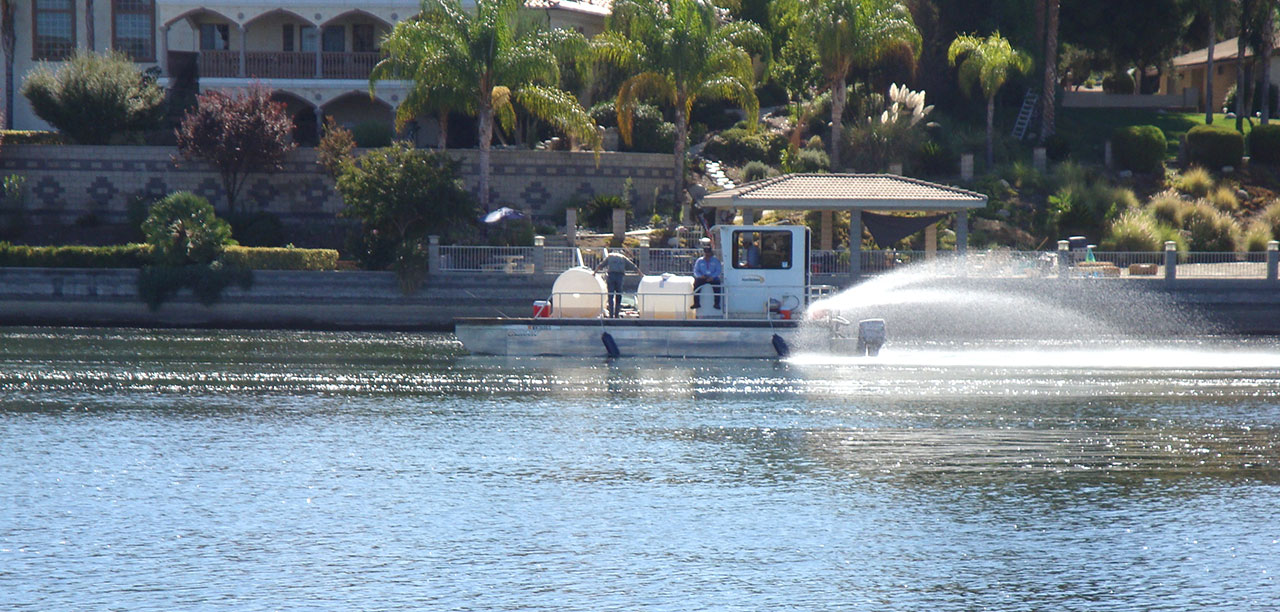Lake scheduled to receive seventh alum treatment
The seventh alum application will be applied to the lake in the East Bay, main body and the area north of the causeway between September 25 through 29.
Stormwater runoff carries with it high levels of nutrients including nitrogen and phosphorus that hurt water quality and threaten marine life. In order to comply with water quality regulations enforced by the State through the local Santa Ana Regional Water Quality Control Board, the Lake Elsinore and Canyon Lake Nutrient Total Maximum Daily Load (TMDL) Task Force has been using a state-funded grant to continue alum water treatments in Canyon Lake.
What is alum? Aluminum sulfate is an EPA-approved pesticide commonly used throughout the United States, including California, to prevent the growth of nuisance algae. There have been no reported incidents of fish kills or other evidence of aquatic toxicity as a result of these lake restoration activities, according to Lake Elsinore and San Jacinto Watershed Authority (LESJWA).
When applied in lakes, alum rapidly binds with phosphorus to form a non-toxic mineral particle called aluminum phosphate. This reaction is usually complete within a few hours and the resulting particles slowly settle to the bottom after just a day or two.
Initially, the aluminum phosphate particles form a thin layer only 1 to 2 mm thick. Eventually, the particles are incorporated back into the soil.
Water officials note that in 2004, 700,000 gallons of liquid alum was applied to 1,550 acres of Big Bear Lake without any adverse effect to fish, aquatic organisms, birds or other wildlife. Afterward, Big Bear observed a 90 percent improvement in water clarity in the month following the alum application.
According to LESJWA spokesperson Mark Norton, alum has a proven track record of success and is safe to both humans and marine life. Drinking water quality will not be affected by any of the treatment options. The lake will remain open during the entire treatment process. Recreational users will experience little disruption during treatment application and implementation.
The TMDL Task Force evaluated several options during the CEQA process and determined that alum application provides the best option as a step to effectively treat the entire lake in a timely manner with minimal impact to residents.
The alum schedule is as follows:
Sunday, Sept. 24, mobilize equipment, boat inspection.
Monday, Sept. 25, Holiday Harbor from 7 a.m. to 4 p.m.
Tuesday, Sept. 26, Holiday Harbor from 7 a.m. to 5 p.m.
Wednesday, Sept. 27, Holiday Harbor from 7 a.m. to 3 p.m.
Thursday, Sept. 28, east ramp, from 7 a.m to 2 p.m.
Thursday, Sept. 28, north causeway, late afternoon.
For daily operation updates, visit canyonlakealum.wordpress.com.
For additional information, contact Mark Norton at 951-354-4221 or MNorton@sawpa.org.
Previous Article
Teen Talk: Make extra money with side hustle


 April 19, 2024
April 19, 2024